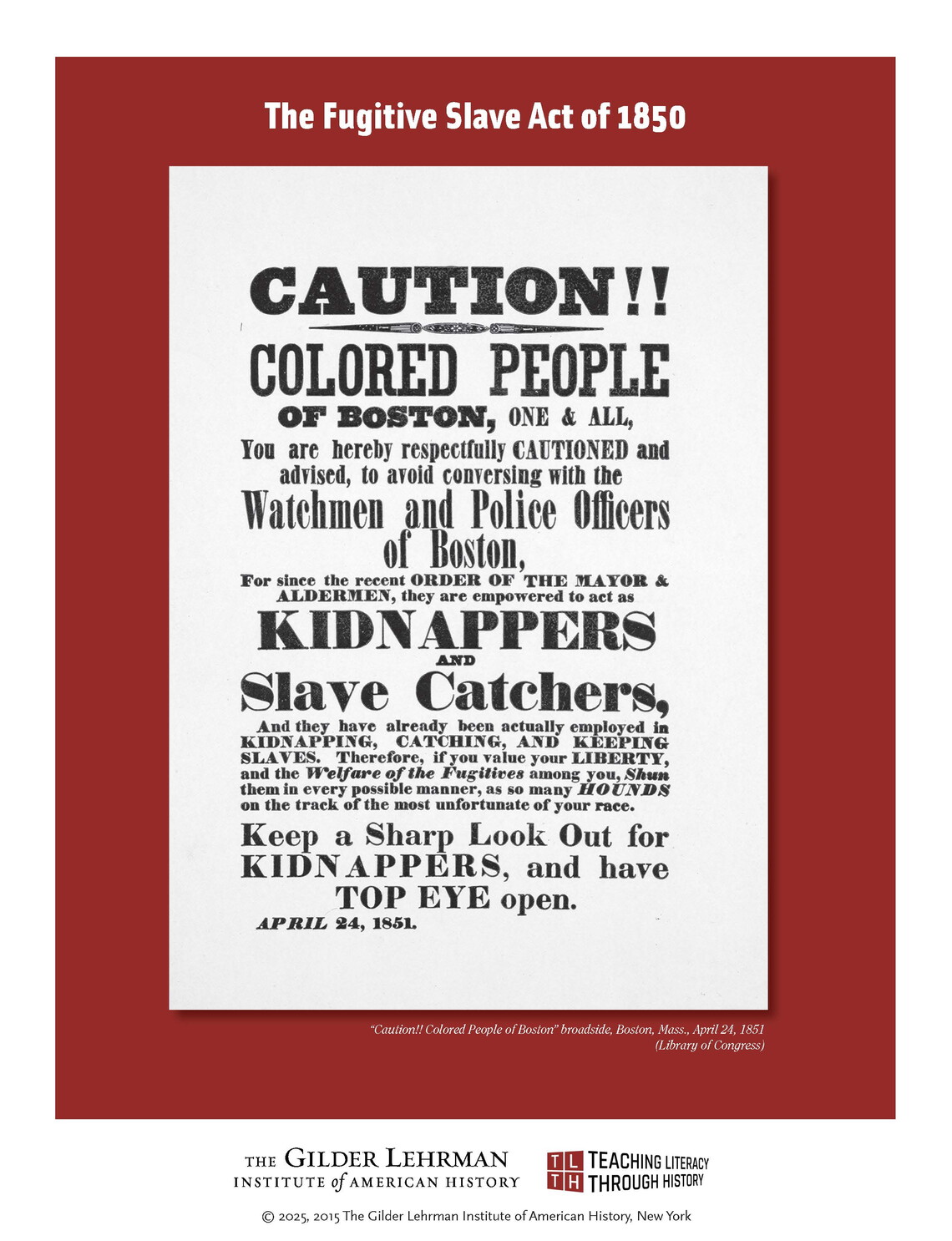Lesson by Ron Adkisson
Essay by Lucas E. Morel, Washington & Lee University
Grade Level: 7–12
Number of Class Periods: 3
Primary Era: National Expansion and Reform, 1815–1860

The three lessons in this unit focus on the Fugitive Slave Act, which was one component of the Compromise of 1850. Students will close read, summarize, and think critically about three primary sources that explore the law and its effects, including a broadside or poster, a letter by an African American, and excerpts from the law itself. They will complete activity sheets and write an argumentative essay.
Lesson Plan Author: Ron Adkisson
Historical Background Essay by Lucas E. Morel, Washington & Lee University
CCSS.ELA-LITERACY.RH.6-8.1: Cite specific textual evidence to support analysis of primary and secondary sources.
CCSS.ELA-LITERACY.RH.6-8.2: Determine the central ideas or information of a primary or secondary source; provide an accurate summary of the source distinct from prior knowledge or opinions.
CCSS.ELA-LITERACY.RH.6-8.4: Determine the meaning of words and phrases as they are used in a text, including vocabulary specific to domains related to history/social studies.
CCSS.ELA-LITERACY.RH.6-8.10: By the end of grade 8, read and comprehend history/social studies texts in the grades 6-8 text complexity band independently and proficiently.
CCSS.ELA-LITERACY.RH.9-10.1: Cite specific textual evidence to support analysis of primary and secondary sources, attending to such features as the date and origin of the information.
CCSS.ELA-LITERACY.RH.9-10.3: Analyze in detail a series of events described in a text; determine whether earlier events caused later ones or simply preceded them.
CCSS.ELA-LITERACY.RH.11-12.9: Integrate information from diverse sources, both primary and secondary, into a coherent understanding of an idea or event, noting discrepancies among sources.
Why did southern legislators advocate for the Fugitive Slave Act?
What was the Fugitive Slave Act and why did it matter?
Who did the Fugitive Slave Act most threaten?
How did the Fugitive Slave Act encourage conformity from the general public in the American North?
How did the general public in the American North react to this legislation?
“Caution!! Colored People of Boston,” an 1851 broadside from Boston, Massachusetts
Letter from James William Charles Pennington, 1851
Excerpts from the Fugitive Slave Act of 1850